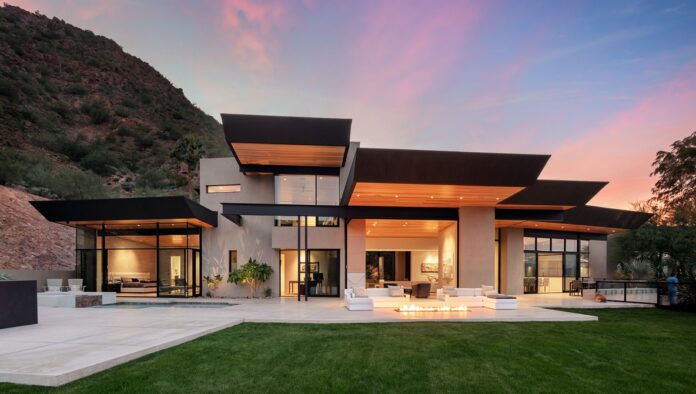Before your camera even leaves the bag, you might consider what architectural photography is really asking of you. Imagine this: every structure carries its own intention, from a Georgian terrace holding stories in its ornate mouldings to a minimalist glass block soaking up the cityscape.
You will find that success here starts with purpose. What statement does the architect want each viewer to hear? Does a particular building want to whisper elegance or shout innovation? A few cardinal points to kick off your process:
- Carry a sturdy tripod for those moments when low light stretches the exposure.
- Use a wide-angle lens, but avoid distortion by keeping it carefully aligned to your subject.
- Explore both the grand view and the subtle elements, you might discover a symphony of lines where you expected only repetition.
Take your time. Linger. Architectural photography rewards patience, letting you uncover what casual passers-by might always miss.
Perspective and Composition Techniques
Ask yourself: what is the most unusual vantage point you can reach? Sometimes a building reveals its essence not from street level, but from corners where you feel like a curious cat on the prowl. You will often be delighted by what a plunge in perspective or a tilt in the frame can create. Try these compositional strategies:
- Leading Lines: Let a handrail, shadow, or paving stone usher your viewer into the frame. Strong lines shape the journey through your image.
- Framing: Peer through doors, arches, or trees. Natural and architectural frames around your subject will hold attention and nod to the built environment’s context.
- Symmetry and Asymmetry: Architectural forms thrive on structure, but you might consider breaking the balance for emphasis. A perfectly centred shot has a classical feel, while an asymmetric crop can spark curiosity.
- Reflections: Scene doubled in a puddle or window pane? It can add layers and intrigue, especially on moody UK afternoons.
You will want to embrace experimentation, tilting your lens, seeking rooftop access (always safely and legally), or even lying on the floor for that skyward reveal.
Playing With Light and Shadow
Light in the UK might feel bashful at first glance, a rainy morning, a low winter sun. Yet, you will find poetry in those shifting gleams. Step outside at golden hour, when the sun’s warmth bathes rooftops, or hunt for buildings that come alive with a single slice of sunlight splitting a façade.
Shadows, too, can be storytellers. Sometimes a structure becomes a sundial, its outlines painted across the pavement. Other times, a pattern of light might lead you to an unexpected nook or corner. A few playful approaches:
- Wait for a passing cloud to transform an ordinary frame.
- Use harsh midday sun for bold contrasts in geometric modern buildings.
- Look for interior shafts of light: stairways, atriums, and glass corridors.
Experimentation with exposure will be key, a slightly underexposed shot can give drama, while overexposing can flatten the details for a faintly washed, ethereal look.
Incorporating People and Movement
Architecture shapes people: people, in turn, transform the space. When you introduce a passer-by or commuter, suddenly a towering structure becomes relatable, a backdrop with a sense of scale or narrative. You might try a few scenarios:
- Motion Blur: Let the rush of feet suggest the morning commute, softening the severity of angular architecture.
- Static Figures: Pose someone at the centre of a stairwell or beneath an ornate arch. You will bring a human heartbeat to stone and steel.
- Candid Moments: Wait until someone sits with a coffee beneath the archway, or a cyclist darts past those classic columns.
These touches remind viewers that architecture lives and breathes as part of everyday rhythm. Over time, you will develop a sense for when a fleeting movement adds to the story, or when a quiet, solitary moment feels right. Sometimes hesitation creates anticipation, which can be far more compelling.
Exploring Unique Architectural Details
You might catch yourself staring longer at a corroded doorknob than at the grand dome above. Details tend to whisper secrets. Seek out the unexpected: rain chains, stair balustrades crawling with shadows, mosaic patterns worn smooth by countless steps.
Close-ups and abstractions can turn an overlooked hinge or weathered brick into a small universe. Allow yourself the freedom to hunt for these micro-landscapes. Sometimes you will find art clinging to the underside of a bridge or nestled high among the eaves, quirky, hidden, unmistakably local. A few prompts for this eye-for-detail approach:
- Focus in tight on one element for texture and colour.
- Contrast modern gloss and glass with the textures of old stonework.
- Play with repeated motifs: arches, rivets, or window frames.
The more you notice, the more you see. Eventually, the city will feel less like a map and more like a gallery, teeming with possibility.
Editing Tips for Stunning Architectural Images
Once you return home, memory cards overflowing, the adventure moves to the digital darkroom. Editing architectural shots is about nudging reality, not bending it out of shape, but polishing until the image echoes your own impressions from that day.
You might start with lens corrections to straighten barrel distortion. Pay close attention to verticals, tilted lines can trip up the eye. Adjust gently. Then, experiment with contrast and clarity. Architectural subjects love definition.
For colour, you will find that adding subtle warmth can offset an overcast sky: for drama, try playing up the cool blues or rich shadows. Black and white edits lend a certain nostalgia, especially with UK architecture: grand churches, modernist estates, brutalist gems. A few closing tweaks you will often use:
- Dodge and burn (lightening and darkening) to emphasise structure and shape.
- Crop for balance but leave breathing room, a snug fit can look claustrophobic.
- Consider exporting different versions: dramatic, muted, or even a creative crop.
Editing remains a matter of choice and instinct, so trust your eye.
Last Thoughts
Architectural photography thrives on curiosity, you will return to a familiar street and suddenly spot a gleaming curve, a rebellious window, or the way ivy coaxes art from a plain wall. With every shot, you will unwrap a new thread in the urban tapestry, reflecting not only architecture but your personal response to place and time. So set out, morning or midnight, bustling or silent. Each structure holds a clue, and your lens might be the key others never knew they needed.















